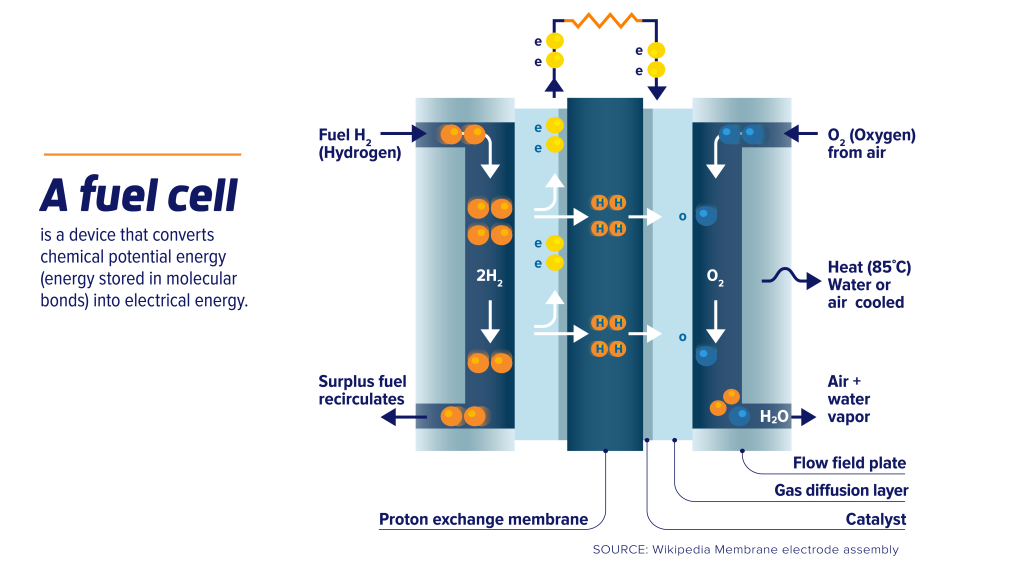Current Context
The Indian Space Research Organisation (ISRO) has successfully tested a 100 W class Polymer Electrolyte Membrane Fuel Cell based Power System (FCPS) in its orbital platform, POEM3 which was launched onboard PSLV-C58 on January 1, 2024.
About
- The objective of the experiment was to assess Polymer Electrolyte Membrane Fuel cell operation in space and to collect data to facilitate the design of systems for future missions.
- During the short duration test onboard POEM, 180 W power was generated from Hydrogen and Oxygen gases stored onboard in high pressure vessels.
- It provided a wealth of data on performance of various static and dynamic systems that formed part of the power system and the physics at play.
Fuel Cell
- A fuel cell uses the chemical energy of hydrogen or other fuels to cleanly and efficiently produce electricity.
- Fuel cells can be used in a wide range of applications, providing power for applications across multiple sectors, including transportation, industrial/commercial/residential buildings, and long-term energy storage for the grid in reversible systems.
Working of Fuel cell:
Fuel cells work like batteries, but they do not run down or need recharging.
- They produce electricity and heat as long as fuel is supplied.
- A fuel cell consists of two electrodes—a negative electrode (or anode) and a positive electrode (or cathode)—sandwiched around an electrolyte.
- A fuel, such as hydrogen, is fed to the anode, and air is fed to the cathode.
- In a hydrogen fuel cell, a catalyst at the anode separates hydrogen molecules into protons and electrons, which take different paths to the cathode.
- The electrons go through an external circuit, creating a flow of electricity.
- The protons migrate through the electrolyte to the cathode, where they unite with oxygen and the electrons to produce water and heat.
Hydrogen Fuel cell
- Hydrogen fuel cells produce electricity directly from Hydrogen and Oxygen gases, along with pure water and heat.
- It is an electric generator which works on electrochemical principles, as in batteries, as against the combustion reactions employed in conventional generators.
- The ability to produce electricity directly from fuels without any intermediate step renders them very efficient. With water as the only byproduct, they are totally emission free.
- These features make them ideal candidates for space missions involving humans where electric power, water and heat are essential since a single system can meet multiple requirements in the mission.
Importance of Fuel Cell
- Fuel Cells also possess significant societal application potential.
Fuel cells have lower or zero emissions compared to combustion engines.
- Hydrogen fuel cells emit only water, addressing critical climate challenges as there are no carbon dioxide emissions.
- There also are no air pollutants that create smog and cause health problems at the point of operation.
- Fuel cells are quiet during operation as they have few moving parts.
- They are also considered to be the most appropriate solution to replace the engines of various types of vehicles in use today and to power standby power systems.
- Fuel Cells can provide range and fuel recharge time equaling that of today’s conventional engine, which gives them a distinct advantage over batteries, and are expected to facilitate emission free transportation.
- Fuel cell is an ideal power source for the Space Station as it provides both power and pure water.

